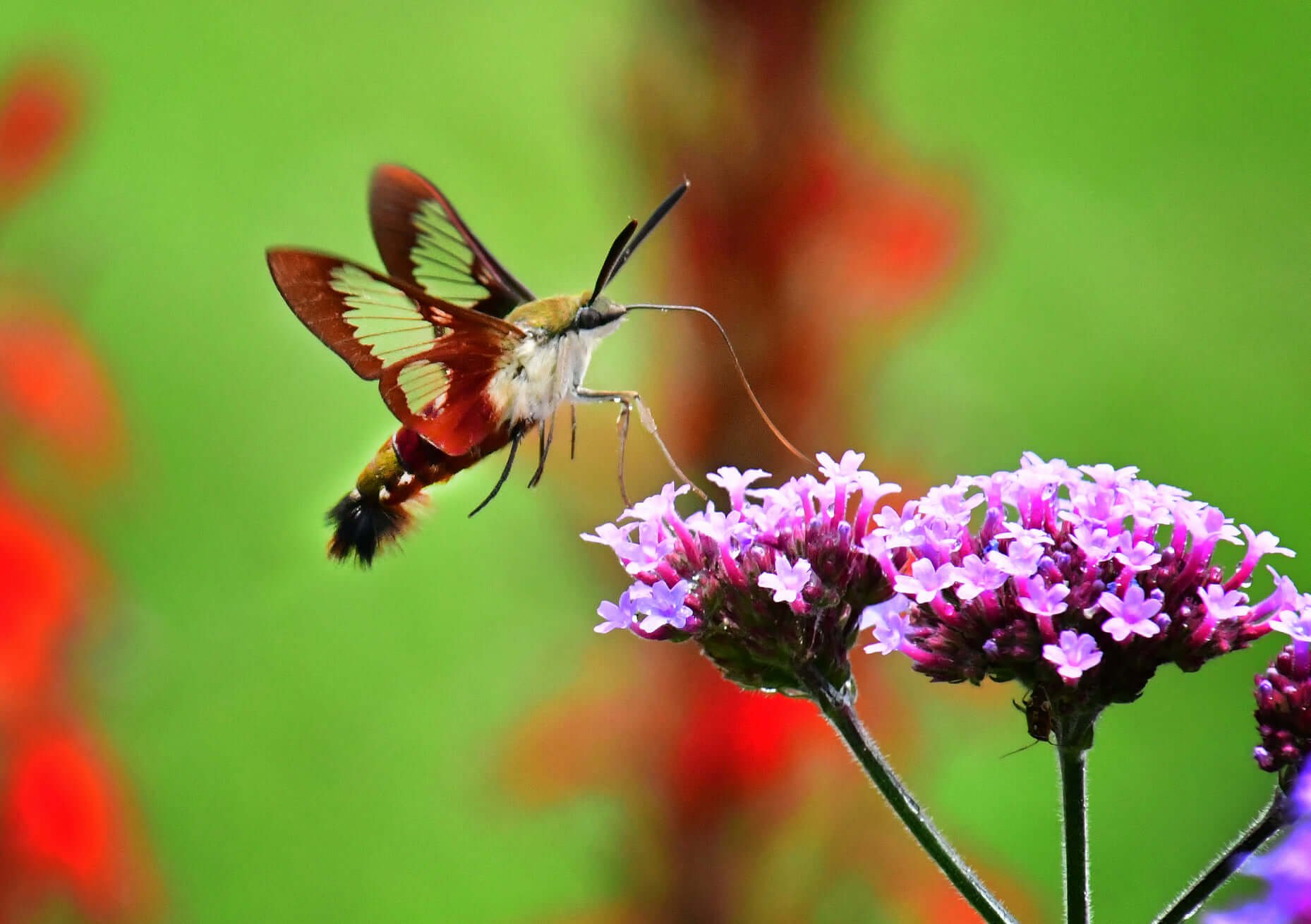Dogbane (Apocynum cannabinum)
Dogbane, also called Indian hemp, has dense heads of small greenish-white flowers with abundant nectar, thus, they are very popular with many native bees, butterflies, and skippers. It is the host plant to the Hummingbird Clearwing and 20 other species of butterflies and moths use this as a caterpillar host plant in our area (nwf.org) (butterfliesandmoths.org/). Dogbane is a vigorous plant and can form colonies, so choose your planting place wisely. Visually, younger plants can be mistaken for Milkweeds, but as the plant matures and flowers, there are recognizable differences. Mammalian herbivores typically avoid the eating Dogbane because the bitter foliage contains cardiac glycosides and other toxic compounds.
Dogbane, also called Indian hemp, has dense heads of small greenish-white flowers with abundant nectar, thus, they are very popular with many native bees, butterflies, and skippers. It is the host plant to the Hummingbird Clearwing and 20 other species of butterflies and moths use this as a caterpillar host plant in our area (nwf.org) (butterfliesandmoths.org/). Dogbane is a vigorous plant and can form colonies, so choose your planting place wisely. Visually, younger plants can be mistaken for Milkweeds, but as the plant matures and flowers, there are recognizable differences. Mammalian herbivores typically avoid the eating Dogbane because the bitter foliage contains cardiac glycosides and other toxic compounds.
Dogbane, also called Indian hemp, has dense heads of small greenish-white flowers with abundant nectar, thus, they are very popular with many native bees, butterflies, and skippers. It is the host plant to the Hummingbird Clearwing and 20 other species of butterflies and moths use this as a caterpillar host plant in our area (nwf.org) (butterfliesandmoths.org/). Dogbane is a vigorous plant and can form colonies, so choose your planting place wisely. Visually, younger plants can be mistaken for Milkweeds, but as the plant matures and flowers, there are recognizable differences. Mammalian herbivores typically avoid the eating Dogbane because the bitter foliage contains cardiac glycosides and other toxic compounds.
Life Cycle: Perennial
Sun Exposure: Full, Partial
Soil Moisture: Medium-wet, Medium, Medium-dry
Height: 2.5-5 feet
Plant Spacing: 2-3 feet
Bloom Time: May-August
Bloom Color: White
Advantages: Caterpillar Favorite, Pollinator Favorite, Deer Resistant, Recommended but vigorous
Host Plant: Hummingbird Clearwing and 20 other species of butterflies and moths use this as a caterpillar host plant in our area (nwf.org) (butterfliesandmoths.org/)














